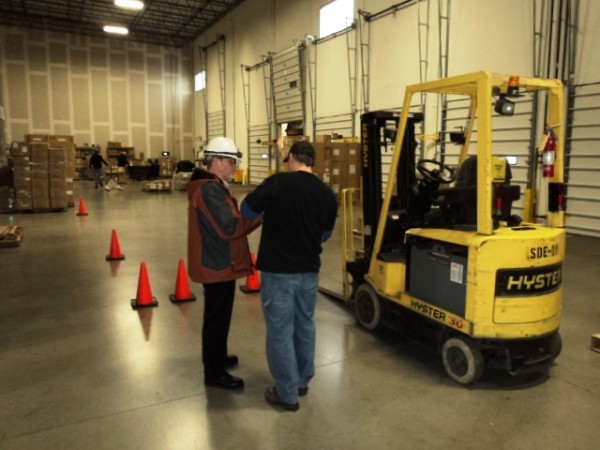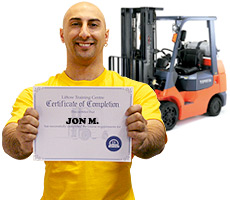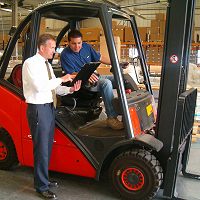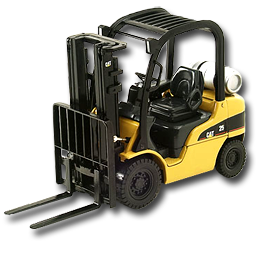Effective Forklift Training – The Five Steps
Even though a forklift does not seem to be a very complicated piece of equipment, in order to use and operate a forklift, it is required for one to be certified as an operator. As they say, “A forklift is only as safe and productive as its operators”. It is essential to understand and make sure one is competent enough to utilize a forklift safely.
Several companies follow and abide by the Occupational Safety and Health Administration (OSHA) overseen certification standard who teach on the job training. However, there are a variety of other sources that provide forklift training. Whatever source that may be, the employer is the one who is ultimately responsible for making sure that the drivers/operators receive sound training. Here are a number of steps that firms can take to ensure that they’re offering a good forklift training program to their employees.
1) Check the Qualifications – Before hiring a third party, it is important to ensure that the trainer is eligible and qualified, by experience as well as on paper.
2) Ask for a site visit – One of the most essential steps for any trainer putting together a training program for a client, is a site visit. The client should not hesitate to ask a trainer for a site visit. A site visit gives the trainer a full understanding of the situation an opportunity to gather all the information he needs to develop a training program according to the client’s specific needs as a warehouse is different to a industrial estate.
3) Ensure the program is systematic, thorough and detailed – Forklift Load Training is not as easy as it sounds, there is a lot more to it than what meets the eye. A good training program should also cover all OSHA regulations and include activities such as inspections, safety and handling to name a few.
4) Classroom Training – An effective training program should make classroom training understandable and more interesting by including a wide variety of media such as safety videos, power-point presentations and printed material. Furthermore, classes should not forget to cover basic concepts such as health, safety, fuelling and other hazards and then move on to site specific information
5) Vehicle Specific Hands on Training – Even though the basics are covered in classroom training, certain concepts such as handling and manoeuvring can only be learned on the equipment. Operators should observe and understand the trainer first before practicing and operating the equipment on their own. It is also essential to provide training to the drivers on the specific model or type of forklift they will be operating because of design variations in different models.
Companies should keep in mind these five simple steps before hiring a forklift trainer in order to ensure a good and sound training program to their operators.
3 Key Points to Remember Before Buying a Used Forklift
With businesses struggling to keep control of their expenses as a result of surging fuel prices and the economic recession, many have turned to the option of buying used forklifts instead of purchasing a new and expensive one. Brand new forklifts are quite expensive and if your usage is limited to a couple hours or less a day, it may be more practical and economical to buy a used second hand forklift.
Before getting in touch with a dealer or company to find out about used forklifts that are for sale, it is important to understand that one must specify what model and type they’re looking for. One must choose a dependable make while comparing different forklifts, particularly when the business relies heavily on one to carry out daily operations.
One must keep in mind the following points when buying a used forklift:
1) Specify what type of forklift you’re looking for:
There are a wide variety of forklifts available based on size, brand and purpose. Do not forget to mention how heavy and what size are your typical loads and how much weight will the forklift be used to lift. One must also specify how high they need a forklift to lift a load. It is recommended to purchase a forklift that can handle the heaviest load and can be used at maximum height.
2) Forklift Attachments, Features, Comfort, and Safety:
Once decided which model/make/type of forklift you’re looking for, one must consider other factors such as comfort, ergonomics attachments, safety features and extras.
3)Visit the Seller and Compare Forklifts:
One must ask the seller for all the information that they need to come to a conclusion such as how many hours the lift has been used. The hours of operation carry more weight than the year the forklift was manufactured. Glance through maintenance records to check if any parts have been replaced during service and whether or not the forklift has been maintained and serviced regularly. Also, inquire about the equipment’s warranty and if it’s nearing its end, one may be able to extend the warranty by paying a small fee.
Remember, one must finalize the purchase only when they are satisfied that they have found a suitable used forklift in good operating condition.






